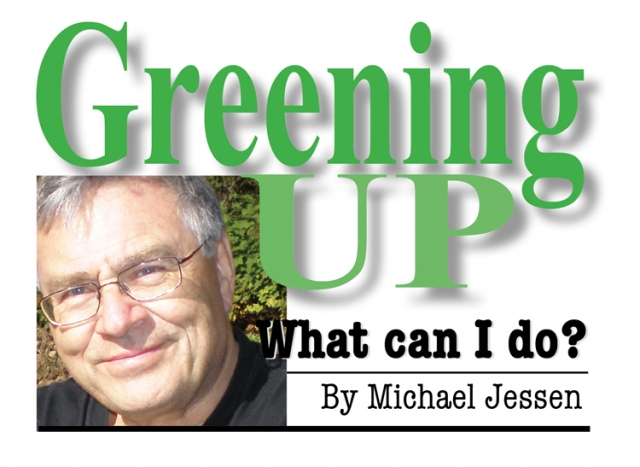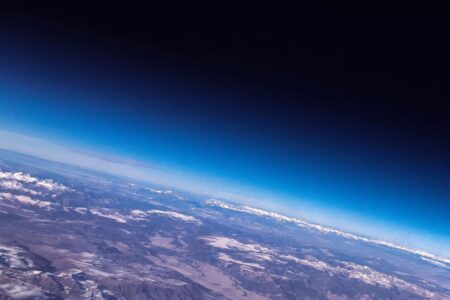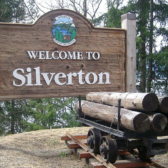Mathematics and Glaciers
Doing the math confirms it; unless we start going fossil fuel free, our glaciers may be doomed.
There are only three numbers to remember so the equation is quite simple.
The enormous challenge is to find ways to curb human addiction to the solid, liquid and gaseous hydrocarbon remains of living matter from a previous geologic time.
When you watch the film “Chasing Ice”, the math and the challenge become clear. The documentary is a visual representation of the relentless impact of climate change on the frozen parts of our planet.
This movie will move you like no other and it is coming to Nelson on Wednesday, January 23.
The film is being held at Nelson’s Capitol Theatre. Admission for this special event is $20; show time is 7:30 p.m.
A joint presentation of the West Kootenay EcoSociety and FLIKS.ca, the film showing is also a fundraiser for the local environmental group that brings you Market Fests, operates the Kootenay Ride Share, runs the Kokanee Creek Visitors Centre, lobbies to keep Jumbo Wild, and much more.
The Numbers
First the math: Earth’s temperature has already risen 0.8 degrees Celsius causing far more damage than most scientists expected. The same scientists say we’re in for greater consequences if the global temperature rises above 2 degrees Celsius. That’s number one.
Number two is 565 gigatons: the amount of carbon dioxide (CO2) scientists says humans can spew into the atmosphere by midcentury to have some reasonable hope of staying under the 2 degrees Celsius threshold. By the way, a gigaton is one billion tons and the International Energy Agency says emissions from fossil fuel burning reached a record high of 31.6 gigatons in 2011.
Number three is 2,795 gigatons: the amount of carbon already contained in the proven coal and oil and gas reserves of the fossil fuel companies. In short, it’s the fossil fuel we’re currently planning to burn.
The key point is that this third number – 2,795 – is five times higher than 565. And if we keep pumping CO2 into the atmosphere at the current rate, we’ll exceed 565 in fewer than 18 years, sometime in 2031.
The Film
Now the film: “Chasing Ice” is National Geographic photographer James Balog’s attempt to take your breath away by setting up multiple cameras to record immediate evidence of ongoing climate change and the impact of rising temperatures on a variety of glaciers.
Taking one photograph per hour from locations in Iceland, Greenland, Montana, and Alaska the net result is time lapse videos of glaciers receding as a result of our ever increasing demand for cheap fossil fuel energy.
The most awe-inspiring moment in the motion picture is the footage of the largest iceberg calving ever filmed, when after weeks of waiting the cameras witnessed 7.4 cubic km (the volume of Loch Ness) of ice crashing off the Ilulissat glacier in Greenland. The glacier retreated 1.6 kilometres in 75 minutes. In July 2012, scientists discovered that all but 3 percent of Greenland’s massive ice sheet had thawed at the surface.
The Link
There is a human link between the math and the Nelson film showing: Bill McKibben.
McKibben – a founder of the grassroots climate campaign 350.org – wrote an influential article last summer in Rolling Stone about the above-mentioned three numbers which evolved into the Do the Math Tour throughout the US and Canada last fall.
The renowned author – he wrote the first book on climate change intended for a general audience in 1989 and has been dubbed ‘the planet’s best green journalist’ by Time magazine – will link up via Skype to introduce the film at Nelson’s Capitol Theatre.
A panel conversation called “Local Response to a Global Challenge” will follow the film with local climate change scientist Mel Reasoner; Fiona Galbraith, the City of Nelson’s Corporate Climate Action Coordinator; local author and former television journalist Mark Nykanen; and local energy specialist Michael Jessen participating.
A renowned nature photographer, Balog was a climate change skeptic who thought the science was only based on computer models. Then he took photos for the National Geographic story “The Big Thaw” and saw firsthand how rapidly a warming climate was melting the world’s glaciers and polar ice.
Founded by Balog in 2007, the Extreme Ice Survey is the largest ground-based photographic survey of the world’s glaciers ever conducted. The project is dedicated to documenting the increasingly rapid melting of the glaciers in the Arctic and other areas.
Film has an Oscar Pedigree
“Chasing Ice”documents Balog’s seven-year journey photographing receding glaciers. It premiered at the Sundance Film Festival in January 2012 and is now being released in theatres.
The film is directed by Jeff Orlowski, cinematographer for the Extreme Ice Survey, and an award-winning filmmaker. Producer Paula DuPré Pesmen, writer Mark Monroe, and composer Josh Ralph all won Oscars in 2009 for “The Cove” about the capture of dolphins in Japan. DuPré Pesmen was also a producer of three Harry Potter movies as well as “Rent” and “Mrs. Doubtfire”.
Davis Coombe, the editor, received an Academy Award nomination for his short documentary “The Last Campaign of Governor Booth Gardner” and won the 2012 short subject documentary Academy Award for the film “Saving Face”.
Composer J. Ralph describes the film as “The ultimate security camera for planet earth” with The New York Times declaring the footage as “undeniably convincing imagery”.
For the closing sequence of the film, Ralph envisioned an arresting and intimate song that would embody the film’s magnitude and fragility. The resulting “Before My Time” performed by Scarlett Johansson with violinist Joshua Bell and pianist Jay Israelson creates a stunning hymn-like epilogue. It is nominated for a Best Original Song Oscar.
Glaciers are Important
“Ice is the canary in the global coal mine,” says Balog. “It’s the place where we can see, touch, hear and feel climate change in action.”
“What made me a skeptic 30 years ago was that I didn’t have it in my head that it was possible that our species, Homo sapiens, was capable of so profoundly altering the basic physics and chemistry of the planet,” Balog told Bill Moyers in an October 2012 interview.
Balog says 95 percent of the glaciers in the world outside Antarctica are retreating or shrinking because temperature and precipitation patterns are changing.
“Without the photographic process, you would never see this. This is invisible.”
Ice that took centuries to develop can vanish in just a few years. A glacier doesn’t melt slowly and steadily like an ice cube on a table.
Once glacial ice begins to break down, the interaction of meltwater and sea water with the glacier’s structure can cause increasingly fast melting and retreat. Today, Earth’s surface is made up of 71percent water, 10 percent ice and 19 percent land. Most of the world’s ice is in the Arctic and Antarctic, but some of it is scattered around Earth in the form of mountain glaciers.
The melting fresh water from glaciers alters the ocean, not only by directly contributing to the global sea level rise, but also because it pushes down the heavier salt water, thereby changing what scientists call the THC, or Thermo (heat) Haline (salt) Circulation, meaning currents in the ocean. This has an immediate effect on the near region, such as the north Atlantic off the coast of Greenland, but ultimately the impacts can ripple far beyond the immediate area and climate.
According to a study published in the journal Science more than four trillion tons of ice from Greenland and Antarctica has melted over the past 20 years – causing sea levels to significantly rise.
Another study by Stefan Rahmstorf, Grant Foster and Anny Cazenave appearing in the November 2012 Environmental Research Letters found average sea levels are rising at a rate of 3.2 mm a year, 60 percent higher than Intergovernmental Panel on Climate Change models predicted just five years ago.
Photographer Has a Quest
Balog is a man on a mission.
“I, as a person who has been a professional nature photographer my whole adult life, am firmly of the belief that photography, video, film have tremendous powers for helping us understand and shape the way we think about nature and about ourselves in relationship to nature,” he says in a 2009 TED talk.
“We have a problem of perception, because not enough people get it yet,” Balog tells an audience at one point in the film.
Today the EIS project is growing – 34 cameras are positioned in 16 places around the world. “The idea was to end up the project after three years, but I do not think we can stop it now,” says Balog. “We now possess this extraordinary historical document and the longer we record, the stronger it gets.”
Climate change may be happening too slowly for us to see it, but Balog speeds up time so that by the end of “Chasing Ice” our eyes and our minds are convinced the math is frightening and our glaciers are dying before their time.
This is an important film that may change your life. Many are calling it the best documentary of the year. Please come to see it.
Michael Jessen is a Nelson-based energy specialist and owner of the consultancy Zero Waste Solutions. He is also the energy critic for the Green Party of BC and can be reached by email at zerowaste@shaw.ca
RESOURCES – The film has two websites http://www.chasingice.com/and http://chasingice.co.uk/
Learn how to shrink your carbon footprint at http://www.chasingice.com/make-a-difference/shrink-your-carbon-footprint/
Find out more about the importance of glaciers at http://earthvisiontrust.org/eis/?page_id=76
The thermohaline circulation is explained at http://www.pik-potsdam.de/~stefan/thc_fact_sheet.html
The Arctic Sea Ice Blog offers the latest news from the top of the planet at http://neven1.typepad.com/blog/
The movie will be shown at Kaslo’s Langham Cultural Centre on February 1 and Nakusp’s Bonnington Arts Centre on February 18.
Balog’s photographic work has received international acclaim. Many major magazines, including National Geographic, the New Yorker, Life, Vanity Fair, the New York Times Magazine, Audubon, and Outside, have published his work. His most recent book, ICE: Portraits of Vanishing Glaciers, was published in September 2012.His photography can be seen at http://www.jamesbalog.com/
The Extreme Ice Survey has a website at http://extremeicesurvey.org/
Listen to James Balog’s TED talk at http://www.youtube.com/watch?v=bAbDDA3otfc&noredirect=1
Balog’s interview with Bill Moyers is at http://billmoyers.com/segment/james-balog-on-capturing-our-disappearing-glaciers/
Bill McKibben’s Rolling Stone article Global Warming’s Terrifying New Math can be read at http://www.rollingstone.com/politics/news/global-warmings-terrifying-new-math-20120719
The ice fjord and the glacier at Ilulissat are in an area of outstanding natural beauty which was added to UNESCO’s World Heritage list in 2004. Find out more at http://www.greenland.com/en/things-to-do/naturoplevelser/ilulissat-isfjord.aspx
Do the Math Tour details can be found at http://math.350.org/
Bill McKibben’s website is http://www.billmckibben.com/
Listen to Scarlett Johansson singing Before My Time at http://www.youtube.com/watch?v=qB4UEQzUmWc
The West Kootenay EcoSociety works to protect the natural environment while building a just and sustainable post-carbon world. The organization has more than 200 members and activates the community through education and leadership. Their website is http://www.ecosociety.ca/
FLIKS (Film Lovers in the Kootenays) is a Slocan Valley-based organization that has been bringing inspiring and insightful films to Kootenay audiences for many years. Click http://www.fliks.ca/index.htmlfor a complete schedule of films


























